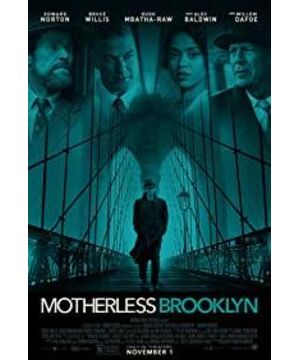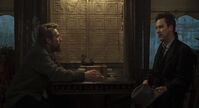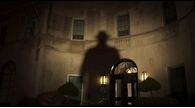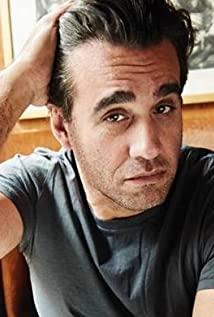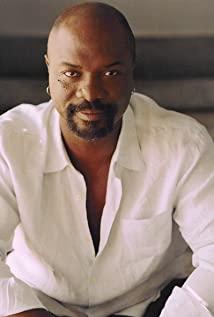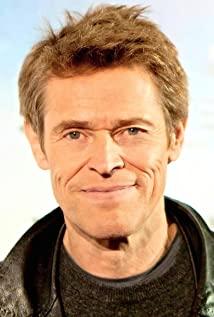This is a well-made film with the soundtrack, pictures and narration all in line with the American film style of the 1990s. But because I don’t have the skills to comment on movies, what I wrote has nothing to do with the film reviews. They are just subjective judgments after personal viewing. In addition, I have not read the original work. It is inevitable that there will be errors. I hope to correct them.
During the first meeting and conversation between Lionel Essrog ( Edward Norton ) and Moses Randolph ( Alec Baldwin ), at 100 minutes of the film, Moses Randolph explained his ambitions and emphasized that the lag of the law had formed him shackles. He believes that what can promote social progress in the future is not the current legal constraints, but the material conditions that the developing cities can provide. However, the current law restricts the development of the city, so he had to "be ahead" of the law, and used the construction process of Central Park as an example to support his view from the perspective of God.
At this time, there are two architectural design renderings on the left side of the screen, and these two pictures aroused my guess. The designer of these two pictures is an American architect named Paul Rudolph (1918-1997). Friends who are familiar with the Hong Kong Lippo Center should not be unfamiliar. Judging from the name, he seems to be Moses Randolph’s younger brother Paul Randolph ( William Dafoe ) prototype, so Rudolph's design project appeared.
The project is called The Lower Manhattan Expressway (LOMEX), and it was launched in the 1950s. The initiator was named Robert Moses . I guess he was the prototype of Moses Randolph, who served as a New York city planner. The famous teacher is also, as mentioned in the film, violently destroying the community . LOMEX is a highway that connects New Jersey to Brooklyn, Queens and Long Island through the Dutch Tunnel, Manhattan and Williamsburg Bridge. The Y-shaped corridor proposed by Rudolph aims to keep the city's infrastructure intact. It proposes a new urban construction method in which the transportation network can restrain rather than disperse the community. The key points in the traffic corridor are multi-story, stacked pedestrian plazas, pedestrian passages and parking lots, which are above and below the existing bridge and railway system. Tall, progressive residential buildings provide light, air and views and are located on either side of the corridors of these passages. Of course, the program shown in the show went bankrupt due to the report and campaign of the reporter (Jane Jacobs). I think this is also one of the reasons why Paul Randolph was rejected at the end of the film. Otherwise, the current New York may be like the following.
Although this plan was rejected in 1962, his influence did not stop there, because a classic of architecture chose this project as the cover of the book reprint. The English version of "Towards New Architecture" in 2014 was a book. A collection of Le Corbusier's essays first published in 1923, citing Wikipedia descriptions.
(The book) advocating for and exploring the concept of modern architecture. The book has had a lasting effect on the architectural profession, serving as the manifesto for a generation of architects, a subject of hatred for others, and unquestionably an important work of architectural theory. The architectural historian Reyner Banham wrote that its influence was "beyond that of any other architectural work published in this [20th] century to date",[1] and that unparalleled influence has continued, unabated, into the 21st century.
From the perspective of time, Le Corbusier would not know LOMEX, and whether Paul Rudolph inherited anything from Le Corbusier, even though I saw the so-called "Five Elements of Architecture" in the description of this plan , I dare not assert. But I think the publisher is willing to choose LOMEX among countless architectural design plans before 2014. This project that Le Corbusier did not directly participate in, as the cover must be sure that there is a potentially close connection between the two.
Finally, back to the movie, I agree with Moses Randolph’s rhetoric, because he reminded me of another paragraph,
The city is a tool of mankind. But today, this tool has rarely been able to do its best. Cities have lost their efficiency: they consume our body, they hinder our spirit. The chaos surrounding the city is deeply offensive: the degradation of order hurts our self-esteem and shatters our decency. They are no longer suitable for this era, they are no longer suitable for us. ——Le Corbusier, "Urbanisme"
The NYC That Never Was: Robert Moses' Lower Manhattan Expressway (LOMEX)
Here's What New York Could Have Looked Like if Lower Manhattan Expressway Was Built
View more about Motherless Brooklyn reviews


